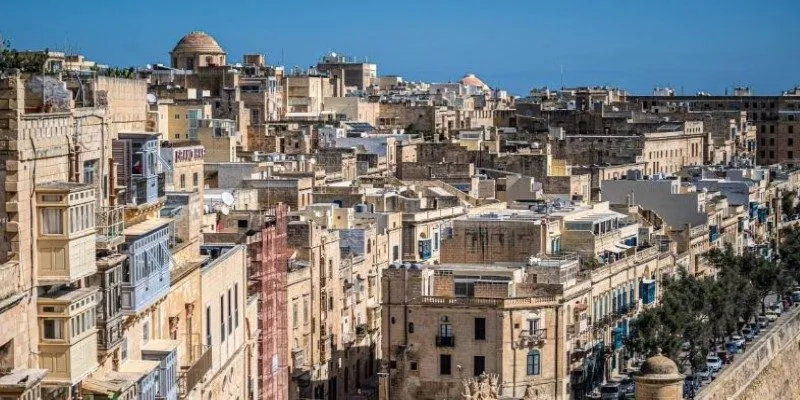The Silent Charm of Malta's Half-Neglected Architecture
Malta, a Mediterranean gem, is where history and architecture blend seamlessly. Beyond its famed landmarks and vibrant streets lies a quieter story told by its half-neglected buildings. Scattered across the island, these structures, worn by time and the elements, reflect Malta’s rich yet tumultuous history of cultural shifts and economic change. Forgotten mansions, decaying farmhouses, and faded townhouses reveal a raw, unpolished side to the island’s character.
Standing against the backdrop of preserved heritage sites in Malta, these buildings strangely evoke nostalgia and intrigue. This article explores their historical origins, preservation challenges, and how these disregarded relics form Malta’s unique identity and timeless appeal.
The Historical Roots of Malta’s Architectural Decay
Half-neglected buildings line the island of Malta, each with a rich yet turbulent history. Strategically placed in the Mediterranean, the island has been coveted by numerous civilizations. From the Phoenicians to the Romans, and later the Arabs, Normans, Knights of St. John, and the British Empire, each era left its mark on Malta’s architecture, narrating its complex past.
The arrival of the Knights of St. John in the 16th century marked a significant architectural flourish, with grand fortifications, churches, and palaces. Valletta, Malta’s capital city, stands as a testament to these grand ambitions. However, Malta’s transition to independence in 1964 brought economic shifts. The departure of British military forces led to an uncertain economic landscape, causing many historical buildings to be overlooked or abandoned.
Modernization came at a cost, allowing many structures to crumble under the Mediterranean climate. Architectural styles like Baroque and Neoclassical were sidelined as modern developments took precedence. These forgotten buildings now characterize the urban landscape of Malta, contrasting sharply with well- maintained landmarks. Despite their neglect, they continue to tell the layered history of Malta’s cultural and political journey.
The Charm of the Forgotten Buildings
Malta’s half-neglected buildings possess a quiet, unpolished allure that captivates those who take the time to notice. These structures, with their cracked facades and overgrown vines, evoke a sense of raw history. They are relics of an island that has weathered centuries of change, loss, and survival. Unlike the polished grandeur of Malta’s restored landmarks, these buildings tell their story through their imperfections.

Forgotten mansions in Valletta, crumbling farmhouses in Gozo, and neglected warehouses in the Three Cities each offer a glimpse into the past. Many of these buildings bear scars of war, with some walls still marked by World War II airstrikes. Others reflect Malta’s colonial history, showcasing architectural elements influenced by British design. Their weathered appearance and lack of upkeep reveal the layers of history that shaped the island’s character.
Yet, these buildings are more than just historical remnants. Nature’s gradual reclamation of their surfaces, combined with their decaying beauty, creates a haunting visual appeal. This juxtaposition of urban life and forgotten spaces fascinates artists, photographers, and architects, making them subjects of creative exploration. Their charm lies not in perfection but in their ability to stand as symbols of Malta’s enduring spirit amidst the passage of time.
The Struggle for Preservation and Renewal
Malta faces a delicate balancing act in preserving its architectural heritage while accommodating modern growth. Efforts have been made to restore key historical landmarks, particularly in areas like Valletta and Mdina, but the majority of Malta’s older buildings remain neglected. Restoration is a costly endeavor, requiring significant resources, which often leads to the prioritization of new developments over preserving the past.
Financial challenges aren’t the only hurdle. Urban planning in Malta lacks a unified approach, leaving many owners either unaware of their property’s historical value or unable to invest in necessary repairs. This, combined with economic pressures, often results in buildings being left to deteriorate or replaced with modern constructions. While these decisions address immediate housing or commercial needs, they contribute to the loss of Malta’s unique architectural identity.
Despite these struggles, some progress has been made. Community-driven initiatives, such as crowdfunding for restoration projects, have emerged in recent years. Abandoned structures have occasionally been repurposed as cultural hubs or creative spaces, blending preservation with contemporary use. Though slow, these efforts indicate a growing appreciation for Malta’s neglected buildings, highlighting their importance as symbols of resilience and as silent storytellers of the island’s complex past.
A New Era of Appreciation for Malta’s Architectural Past
Malta’s half-neglected buildings are gaining recognition as symbols of the island’s resilience and layered history. As tourism flourishes, visitors seeking authentic experiences are drawn to the raw beauty and hidden stories within these weathered structures. Far from mere remnants, these buildings now form an integral part of Malta’s identity, reflecting its endurance through centuries of cultural and political change.

Efforts to preserve Malta’s half-neglected buildings, including their transformation into cultural spaces, reflect a growing recognition of their historical and cultural significance. Despite an uncertain future, these structures captivate with their haunting charm and timeless narratives. Scattered across the island, they stand as enduring artifacts of Malta’s rich past, enriching its landscape and bridging the present with the resilience and legacy of its history.
Conclusion
Malta’s half-neglected buildings are a testament to the island’s rich, tumultuous history—a history that spans centuries of foreign occupation, war, and change. These buildings, often left in various stages of decay, offer a unique glimpse into the past, revealing stories of Malta’s cultural shifts and the complexities of preserving its heritage. While the future of these buildings remains uncertain, their charm and significance are undeniable. They stand as silent witnesses to Malta’s past, holding onto memories of a time that is slowly fading from view. Yet, in their quiet neglect, they offer a sense of authenticity and a deeper connection to the island’s true identity.
